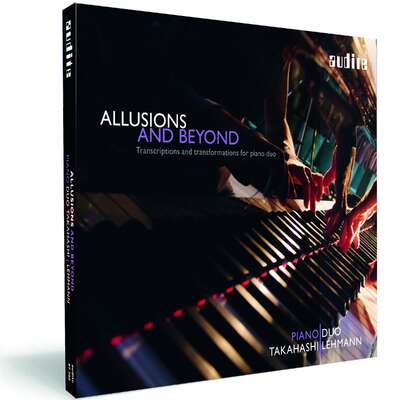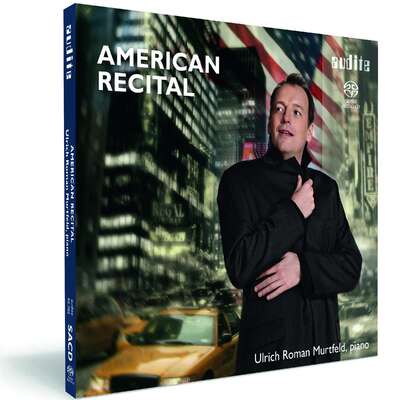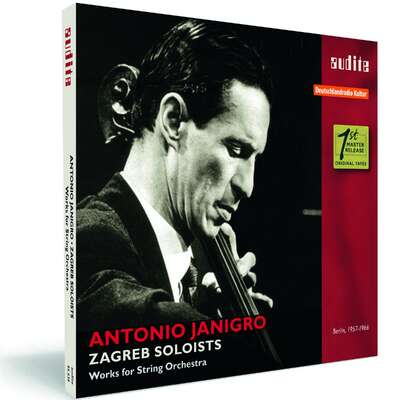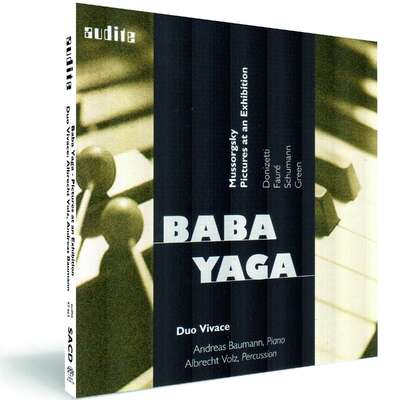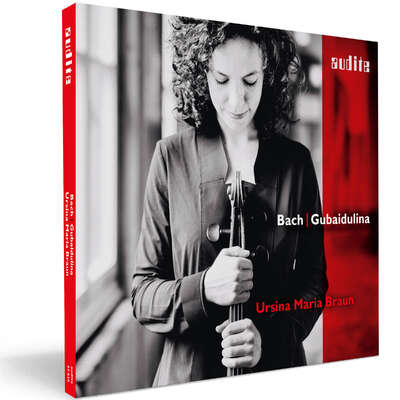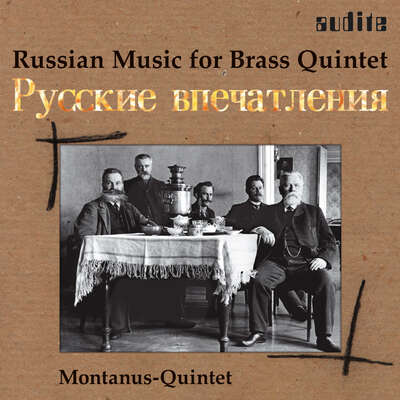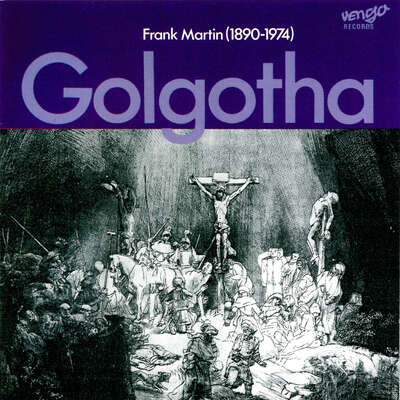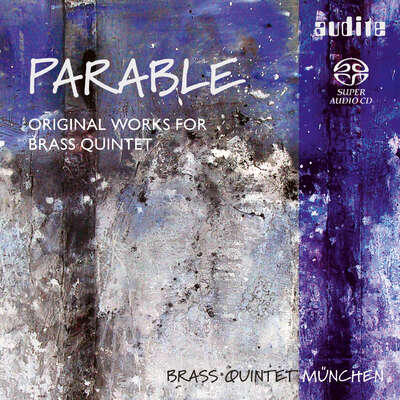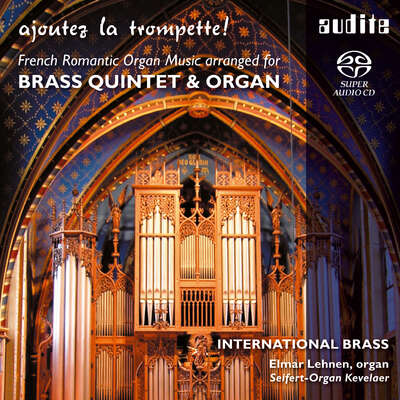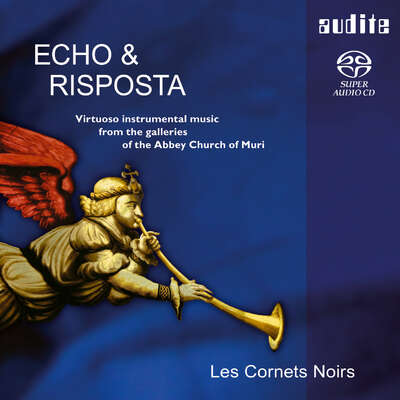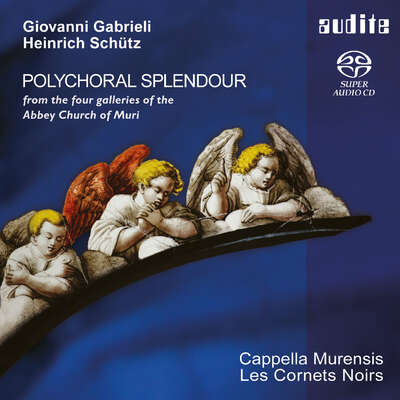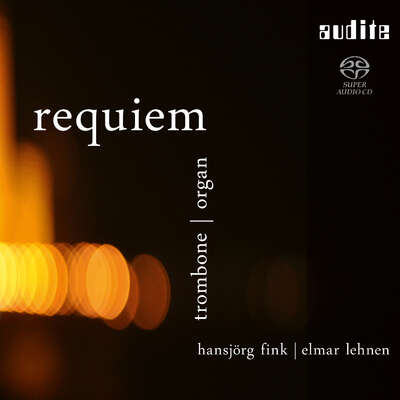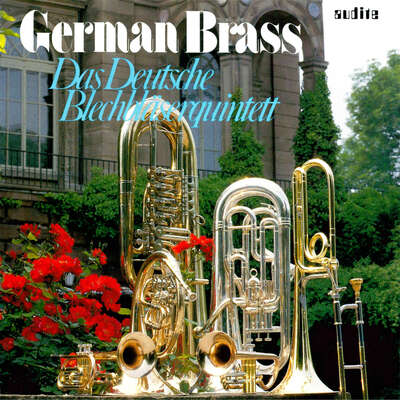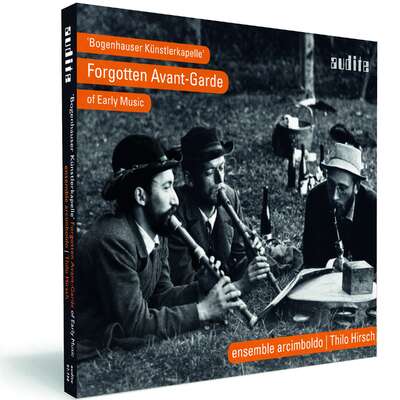
The Münchner Posaunen Quartett has a demanding goal in mind and ear. The four musicians aim to open up anew all the sonic facets of 400 years of stylistic diversity from Michael Praetorius (1612) to Samuel Barber (1936). And they succeed in this aim on the CD presented here: One listens to...more
"The liner-notes – in English and German – are surprisingly informal, which gives you a pretty good idea of the players’ approach to the music. Well worth a spin, even if this isn’t your usual fare." (musicweb-international)
Details
| Ouverture - Works for Trombone Quartet | |
| article number: | 97.533 |
|---|---|
| EAN barcode: | 4022143975331 |
| price group: | BCA |
| release date: | 24. October 2007 |
| total time: | 52 min. |
Informationen
The Münchner Posaunen Quartett has a demanding goal in mind and ear. The four musicians aim to open up anew all the sonic facets of 400 years of stylistic diversity from Michael Praetorius (1612) to Samuel Barber (1936). And they succeed in this aim on the CD presented here: One listens to familiar works more intensively than ever; less familiar works markedly heighten the joy in making new discoveries, encouraging the listener to continue and repeat the experience.
Baroque music theorist Johann Mattheson’s statement from 1713 was considered valid for a long time, namely that “the large and small trombones can form a complete choir, but are only rarely used apart from church music and solemnities.” But that was not all that challenged the Munich quartet to take exception. They were also challenged to prove that the unjustifiably termed “heavy brass” can definitely attain a thoroughly chamber-music-like tenderness and expressive richness - as the baroque informant Mattheson puts it, “a gallant gentleman acquiring a complete conception and dignity from the noble MUSIC.”
Thomas Horch is principal trombonist of the Bavarian Radio Symphony Orchestra. He is lecturer at the Richard-Strauss-Conservatory and from 2008 on at the University of Music and Performing Arts in Munich.
Dany Bonvin is principal trombonist of the Munich Philharmonic and member of the ensemble Blechschaden. He is professor at the Mozarteum in Salzburg.
Uli Pförtsch is principal trombonist of the orchestra of the Bavarian State Opera.
Volker Hensiek is bass trombonist of the Bamberg Symphony Orchestra. He is teaching at the University of Music and Performing Arts in Munich.
Reviews
www.critic-service.de | Dezember 2009 | Christian Ekowski | December 1, 2009
Trompeten-Ensembles hört man oft, weil sie zumeist brillant schmettern undMehr lesen
www.musicweb-international.com | February 2008 | Dan Morgan | February 1, 2008
Brass quartets can be most rewarding, as I discovered with the recent Tetraphonics disc of 20th-century music for four saxophones. Far from being anMehr lesen
An arranger and academic Horch is no mean player either, having been principal trombonist with the Berlin Philharmonic from 1987 to 1989. At the time this recording was made – in 1996 – Dany Bonvin and Uli Pförtsch were principals with the Munich Philharmonic and Bavarian Radio Symphony Orchestra respectively, while Volker Hensiek played bass trombone in the Bamberg Symphony.
As much as I wanted to enjoy the earlier items I found there simply wasn’t enough variety of timbre and dynamic to hold my attention for long. The Praetorius dances – two ballets, a galliard and a courant – are all despatched in ringing style but there is an relentless quality to the music-making that may deter all but the most dedicated brass fans. Yes, the Bach Prelude and Fugue is neatly done, the opening of the prelude especially sonorous, but there is little character here. The fugue fares rather better, with some deft articulation, but ultimately it all seems a little bloodless.
The Boismortier – originally scored for three flutes and continuo – is cast in the form Adagio-Allegro-Largo-Allegro, the faster movements full of brio and bite, the Largo characterised by a pleasing instrumental blend and real gravitas. Perhaps a warmer, more expansive acoustic might have helped to tame the trombones’ natural edge, especially in the more exposed upper registers.
Some extra ‘air’ would certainly been welcome in the ‘horn call’ at 4:06 in the Rossini but that said the players achieve some wonderful, rich sonorities in the run-up to the famous gallop. The latter is dashed off in great style; surely one of the more invigorating and infectious arrangements on this disc.
Curiously Barber’s Adagio, derived from the second movement of his String Quartet No. 1, Op. 11, has become synonymous with sadness and tragedy. Indeed, listeners of BBC Radio 4’s Today programme voted it the ‘saddest’ piece of classical music ever written. The natural timbre of the trombone – especially in the lower registers – may lend itself to mourning but to their credit the Munich quartet invest the long, flowing melodies with a genuine sense of nobility. The climax is splendid but it’s the gentle ending that is most moving. This really is exceptional playing, sensitively done.
The Petite Suite is not the work Debussy wrote for four hands in 1869 but a suite of the arranger’s own choosing. First up is the delightful Minstrels from Book I of the Préludes. Delectably sprung, the piece has all the harmonic colouring of the piano original plus a real sense of fun. Taken from the same book The Girl with the Flaxen Hair is rather more serene – after all it is marked Très calme et doucement espressif – eliciting some secure and surprisingly tender playing. There’s nothing restrained about the jazz-inflected rhythms of Golliwog’s Cakewalk, from Children’s Corner (1908). Again the quartet bring a welcome degree of spontaneity to the music, especially in the staccato chords that pepper the piece.
They also rise to the rather different rhythmic challenges of Brahms’s 3rd and 4th Hungarian Dances, which come across with plenty of vigour. As a foil to this Magyar moodiness comes the Italianate warmth of the overture to Donizetti’s comic masterpiece Don Pasquale. Full of wit and point this is a real test of the trombonists’ expressive skills. Needless to say they are more than equal to the task.
This disc gets better with repeated listening, but I still feel the early pieces are the least successful. From the Barber onwards matters improve, though; it’s impossible not to smile at the humour of the Cakewalk or bask in the genial warmth of Pasquale. The liner-notes – in English and German – are surprisingly informal, which gives you a pretty good idea of the players’ approach to the music. Well worth a spin, even if this isn’t your usual fare.
Der neue Merker | 01/2008 | Dorothea Zweipfennig | January 1, 2008
Bläser-Musik nicht nur zu Weihnachten mit dem Münchner Posaunen Quartett,Mehr lesen







